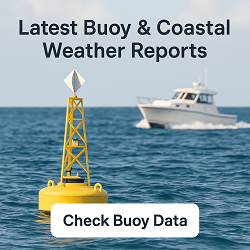Aquasco, MD Weather Forecast and Current Conditions
Current Conditions From Nearby Station
Feels Like 39°F
at
Point Forecast at a Glance







7-Day Temperature Trend
Week Ahead Summary
Variable high temperatures through the week, ranging from 54°F to 70°F. Some rain possible with at least 3 days showing precipitation chances of 20% or higher.
Climate Context
Temperatures are expected to be near normal for this time of year, with highs around 57°F and lows around 39°F.
This Date in Weather History
1987 - A deepening low pressure system brought heavy snow to the east central U.S. The Veteran's Day storm produced up to 17 inches of snow in the Washington D.C. area snarling traffic and closing schools and airports. Afternoon thunderstorms produced five inches of snow in three hours. Gale force winds lashed the Middle and Northern Atlantic Coast. Norfolk VA reported their earliest measurable snow in 99 years of records.
Aquasco, MD 7 Day Weather Forecast Details
Wednesday Nov 12

Day: Sunny, with a high near 59. Southwest wind 10 to 18 mph, with gusts as high as 30 mph.

Night: Mostly clear, with a low around 38. West wind around 9 mph.
Thursday Nov 13

Day: Sunny, with a high near 56. West wind 8 to 15 mph, with gusts as high as 23 mph.

Night: Mostly clear, with a low around 33. Northwest wind around 7 mph.
Friday Nov 14

Day: Mostly sunny, with a high near 58.

Night: Partly cloudy, with a low around 35.
Saturday Nov 15

Day: Mostly sunny, with a high near 58.

Night: A chance of rain after 1am. Mostly cloudy, with a low around 48. Chance of precipitation is 30%.
Sunday Nov 16

Day: A chance of rain before 1pm. Mostly sunny, with a high near 70. Chance of precipitation is 30%.

Night: Mostly clear, with a low around 40.
Monday Nov 17

Day: Sunny, with a high near 57.

Night: Partly cloudy, with a low around 37.
Tuesday Nov 18

Day: A slight chance of rain after 7am. Partly sunny, with a high near 54.
About Aquasco, MD
Content from Wikipedia, licensed under CC BY-SA 3.0.
How We Provide Better Local Weather
Current conditions: We use the nearest available station to your location - including professional MESONET/MADIS and local weather stations - often miles closer than regional airports.
Forecasts: National Weather Service point forecasts predict for your specific area, not broad regional zones, making them far more relevant to your location.



